In September of last year, Globetrotters’ regular China correspondent had the opportunity to go to Zhouzhuang, an ancient canal town west of Shanghai. It is not an extra fantastic place, and I would recommend anyone planning a day trip there to BYO food and beverages, but it succeeds as a stimulating historical site, albeit in the Chinese manner. I had the luck to receive an invitation thence from a Chinese journalist who offered transport and paid expenses, so this article may still be sweeter than reality.
According to its hundred-kwai entrance ticket, Zhouzhuang was founded in 1086, and “is just like a shining pearl among Shanghai, Suzhou and Hangzhou”, the latter two cities being famous aqua-cultural destinations; Suzhou, in fact, is vaunted as China’s answer to Venice. Indeed, Zhouzhuang could be classed as part of Zhejiang Province’s Suzhou-Hangzhou-Lake Tai triangle, which is celebrated for its H2O-enriched landscapes. After more of the usual Chinese touristic tirades, the ticket boasts that “Zhouzhuang is on the Reserve List for the World Cultural Heritage,” and has received some other official recognition from the UN.
The amusingly inadequate tourist map indicates all the major sights and bridges in the town, although it gives no indication of the many intriguing hutong, or small lanes and alleys, which could make the place an agreeable day trip. Zhouzhuang’s “commercial zones” (shangyechu) are thoughtfully marked in orange, with the idea of attracting (Chinese) visitors, but since the entire town is a canal-laced tourist trap, such indications are unnecessary. As for its picturesque waterways, Zhouzhuang was, judging from the map, first built between South Lake (nanhu) and the Baixian River just north of it, after which its canals were dug in a grid down its main streets. Though hardly Venetian, the canals are pretty, especially with Chinese gondolas floating along under the arched bridges that span them. The stone pavements beside the canals are lined with booth after booth of vendors selling beads and T-shirts, graced by the occasional art gallery or ceramics shop to give some colour to the monotonous array of dreck. There are also many little restaurants and tea houses, but the prices are a little hefty for what you get.
Even if you decide not to visit Zhouzhuang, or even fly all the way to China (which can be a good idea), the description of the town’s sights on the back of the tourist map is a must-see. The introduction, which has no spaces after punctuation marks, tells us that historic Zhouzhuang was the home of the famous Chinese Writer [sic]. And the ancient cultural town in Soun [sic] China….The town is surrounded by water with many branching steams [sic]. Visitors from all over the world are intoxicated by its unique scenery, which is formed by lanes, alleys, meandering steams [sic], stone bridges and old residence [sic] with black tiles and while [sic] wells [sic?].
The back of the map continues by telling the anglophone visitor about such delights as “The Double Bridge”, “The Hall of Shen’s Residence” and the museum. The most priceless description of a historical site, however, is that of the “Mi Building”, where, in the early 1920’s, liu [sic] Yazi and Chen Qubing, Sponsors [sic] of Nanshe Community [no definite article or comma] had orgies here for 4 times, singing merrily and improvising poems in joyful mood [sic, sic, sic]. Also worthy of mention is the account of “Shen wansan’s Residences [sic]”, which merits being quoted in full:
It is located in the Dongduo (name of the place) by the South Lake, where Shen Wansan’s father and he inhabited in Zhouzhuang [sic] from the South Xun and gained fame and fortune rapidly [sic]. According to the record (talking about Suzhou) [sic] by Yang Xunming in Ming Dynasty: “Shen Wansan’s residence was in Zhuang Zhou [sic], only broken house and the big pines existing here [sic].” The elegance group rebuilt it in the former address according to its original style and features.
To photographically record your treasured memories of these storied sites, Zhouzhuang’s branch of Kodak Express has its advert in the back of the map’s lower right corner. At three kwai, both sides of the map are worth more than a physical trip to the place they illustrate, and can tell you more about the “real China” than a heap of tomes by economists, anthropologists, educationists and their ilk. Globies wishing to adore the place for more than a few hours can put up at the hotels in the northern half of the town, all faithfully marked on said map.
|
|
|
|
Zhouzhuang Canal & houses |
Zhouzhuang and its take on Venice |

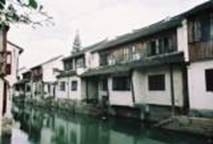
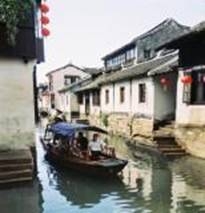
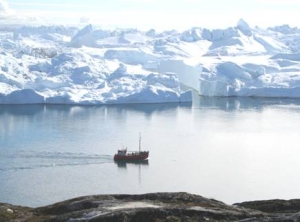


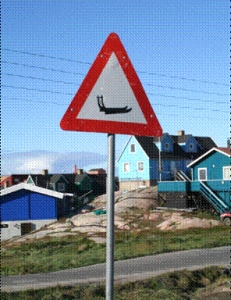


 If you like Graham’s poems and what to read more, his recently self published book ‘Around the World in 80 Poems: Rhyming Reasons to Travel the Globe… Not!’ is available from most online book stores or directly from his publishers
If you like Graham’s poems and what to read more, his recently self published book ‘Around the World in 80 Poems: Rhyming Reasons to Travel the Globe… Not!’ is available from most online book stores or directly from his publishers 
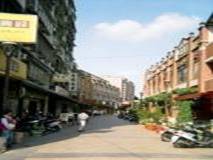
 Regular contributor Mac had some thoughts on hearing that The Ant is stepping into the Beetle’s very large shoes…
Regular contributor Mac had some thoughts on hearing that The Ant is stepping into the Beetle’s very large shoes… 